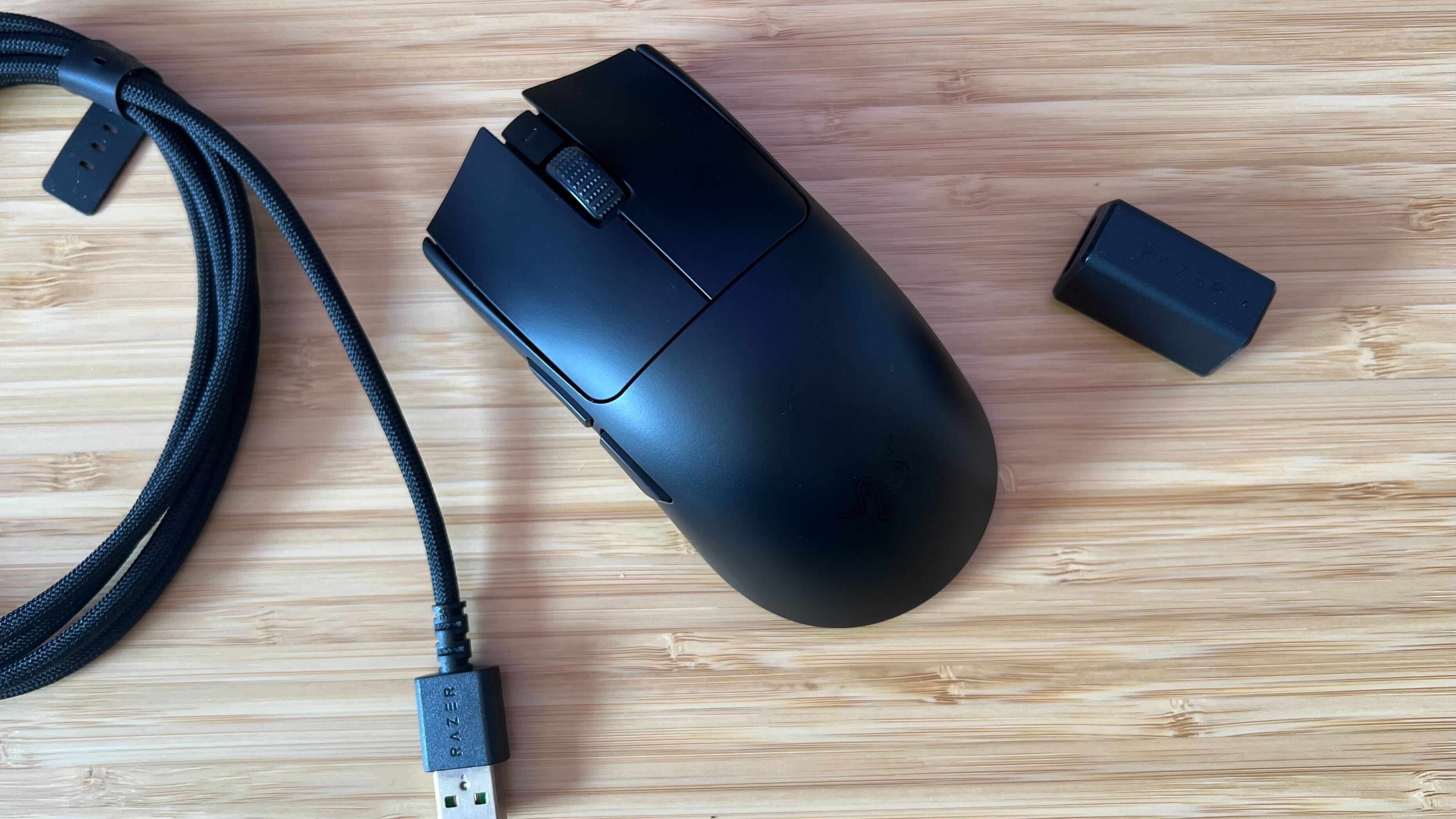GamesRadar+ Verdict
The Razer Viper V3 Pro is a competitive gaming mouse dead set on making sure you’re the fastest gunslinger on the battlefield. That dedication to the line’s core esports crowd may shove more casual players out of the picture, but if you’re after pure speed, and you’re happy to pay for it, this is where you’ll find it.
Pros
- +
Super-fast performance
- +
Incredibly lightweight
- +
Comfortable, curved design
- +
8K HyperPolling dongle included
- +
Boosted sensor
Cons
- -
No accessible DPI shifter
- -
HyperPolling dongle makes it harder to transport
- -
Larger shape won’t be for everyone
Why you can trust GamesRadar+
The Razer Viper V3 Pro is finally here - two years after the V2 model and months after the line’s budget entry, the Hyperspeed. The latest rodent brings with it the softer shape of more recent Razer releases, abandoning the harsh lines and angular cutouts of previous iterations in favor of a chunkier, but still featherlight, dome. A boosted sensor, lighter form factor, and design overhaul means this is, on paper at least, Razer’s best gaming mouse for esports professionals.
Its $159.99 / £159.99 MSRP sits at the top end of the scale, putting it in direct competition with Logitech’s Go Pro X Superlight. However, if you’re a hardcore competitive player looking for low-weight, high-response gaming you might not need to look elsewhere.
| Price | $159.99 / £159.99 |
| Connection | 2.4GHz / Wired |
| Shape | Right-handed |
| Programmable buttons | 6 |
| DPI | 35,000 |
| IPS | 750 |
| Switches | Razer Gen 3 Optical |
| Weight | 54g |
Design
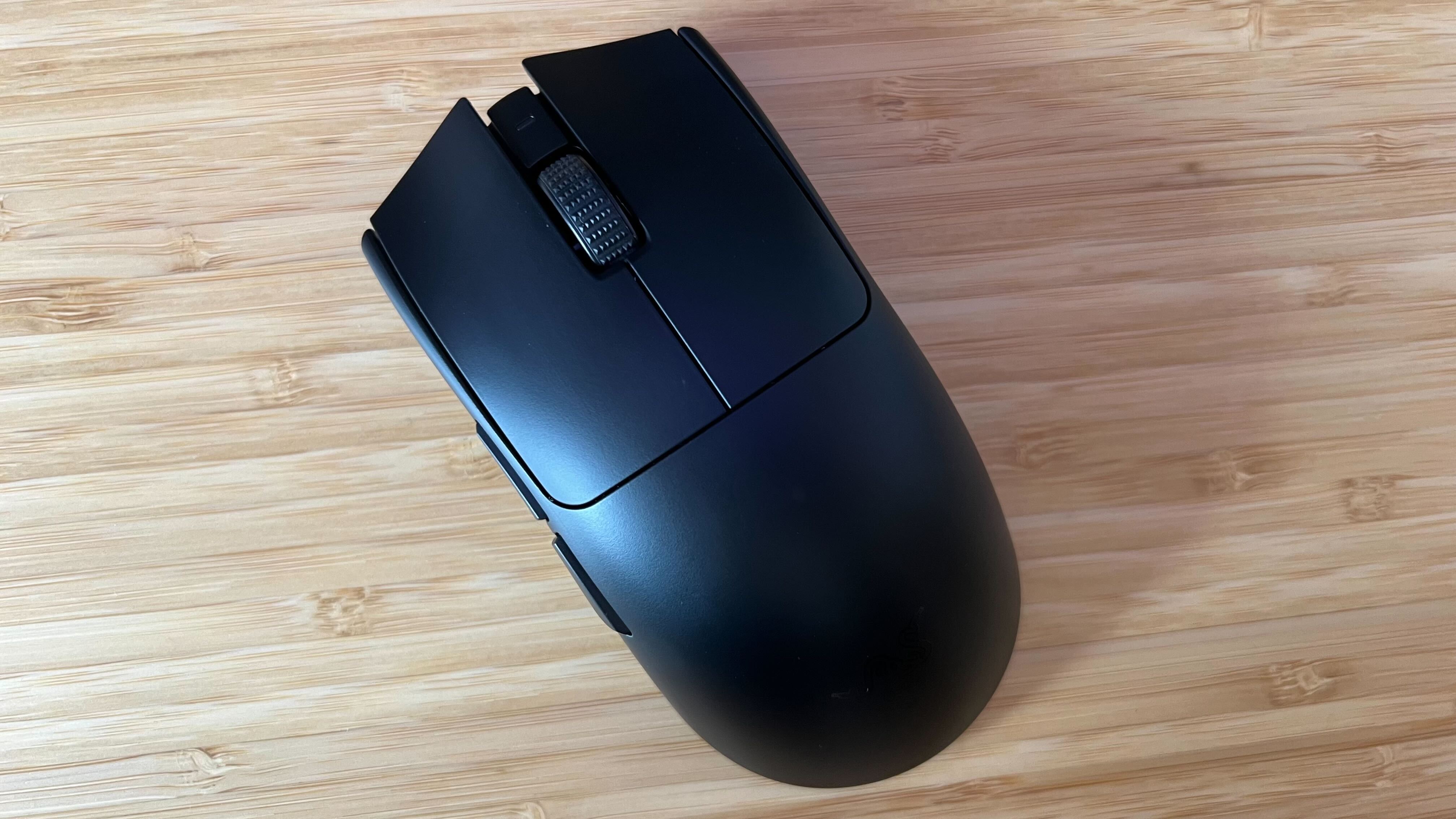
I reviewed the Razer Viper V3 Hyperspeed on release last year. That’s the mouse that introduced Razer’s new vision for its Viper line, and one that primed the stage for the V3 Pro today. The Pro keeps this soft-touch plastic design, dropping the slightly textured feel of the Viper V2 Pro (which I personally prefer), and curvier feel. In fact, if it weren’t for the absence of a DPI shifter in between the two main clicks, the Pro could easily be mistaken for its cheaper sibling. That’s more praise for the Hyperspeed model than a dig at the more premium version, especially considering the lack of an easily accessible DPI button can be tricky to reconcile on the Pro.
Of course, you won’t find this 54g form factor on many wireless options. That’s lighter than the Glorious Model O 2 Pro 4K / 8K model at 59g, and nearly 10g lighter than the Logitech G Pro X Superlight 2 at 63g.
The entire chassis measures in at just under 13cm long with a width of 6.3cm, with a spacious rear that nestles neatly in the palm but still remains easily slidable in a fingertip grip. In fact, all grip types are well supported by this shape thanks to the relatively high dome shape and ever so slightly recessed panels on each side. The Viper V3 Pro still manages to cut a sharper profile than the Superlight 2. Whereas the latter curves its main clicks at the top and maintains a straighter line down each side, the V3 Pro has a more pronounced wave to each side, providing a little extra in the way of ergonomic thumb support.
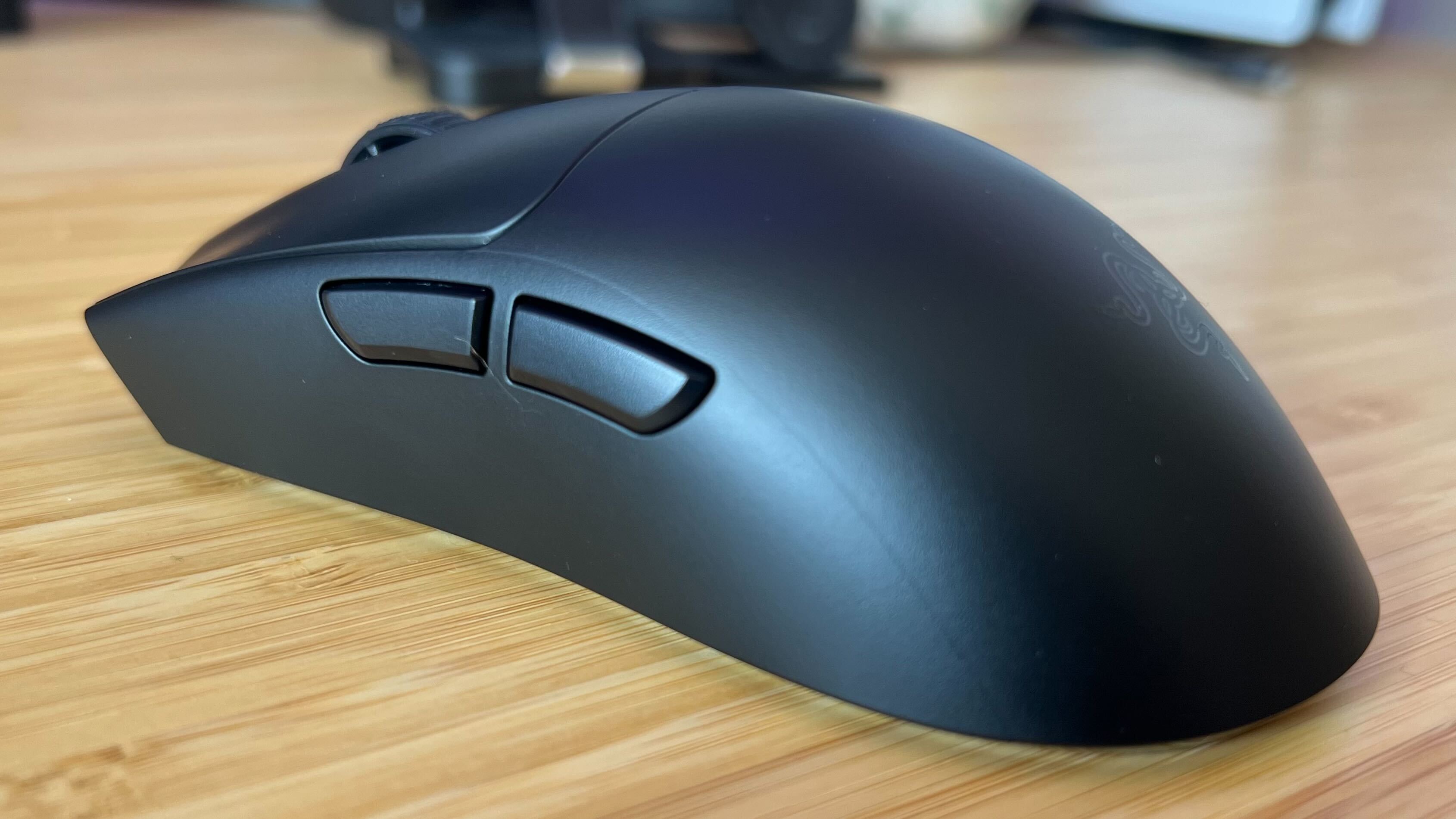
It’s a form factor that’s becoming more and more popular among FPS-first mice. Popularized by the Superlight (and now refined in the second generation version), the soft matte finish and chunkier body make for a comfortable experience even during longer sessions. I was also surprised by the level of grip from what initially appeared to be a slicker plastic material, but if you do need more texture Razer also provides grip tape in the box.
And that’s about it. There’s no RGB to faff around with and drain your battery, just a simple black Razer logo stamped onto the rear and a small LED indicator light at the top.
Features
One of the first things I noticed when setting up the V3 Pro is the lack of USB-A dongle. You’ll be relying on Razer’s HyperPolling dongle (which itself needs a separate USB-C cable) for this one. That’s a little frustrating, especially when it comes to travel. I’m not one for having loads of cables on the desk top - after all, if you’re after one of the best wireless gaming mice options, the tidier aesthetic might have factored into your decision. It also might be safe for Razer to assume that those who will actually make use of the 8,000Hz polling rate (which will only be those in the top percentages of competitive players) have already picked up the popular booster.
In a strange twist, a wired connection will cap your polling rate at 1,000Hz. That’s a little odd - frequencies are usually higher when plugged in and dropped significantly when wireless. Battery life does take a considerable hit when bumping things up to 8K as well. Razer expects a 17-hour lifespan when solely used at the top end of the polling rate (I had to plug in after two days, which measured in at around 16 hours), whereas a 1,000Hz setting can see you through 95 hours of play. In reality, this is another feature for the ultra-competitive among us. Those looking to play more causally really aren’t going to notice the fractions of milliseconds they save with a higher report frequency, especially now that we’re in the realm of 8,000Hz.
Still, with a coil of USB-C cable and a speedy receiver in tow, the Razer Viper V3 Pro is packed with the brand’s fastest and most reliable tech. The new Focus Pro 35K optical sensor debuts here, offering a max DPI of 35,000 with a 750 IPS speed. That’s not a massive boost over the previous generation, and even less of a must-have considering very few players will ever reach that upper echelon of 35,000. Like the previous iteration, the sensor also supports customized lift-off distances via asymmetrical cut-off.
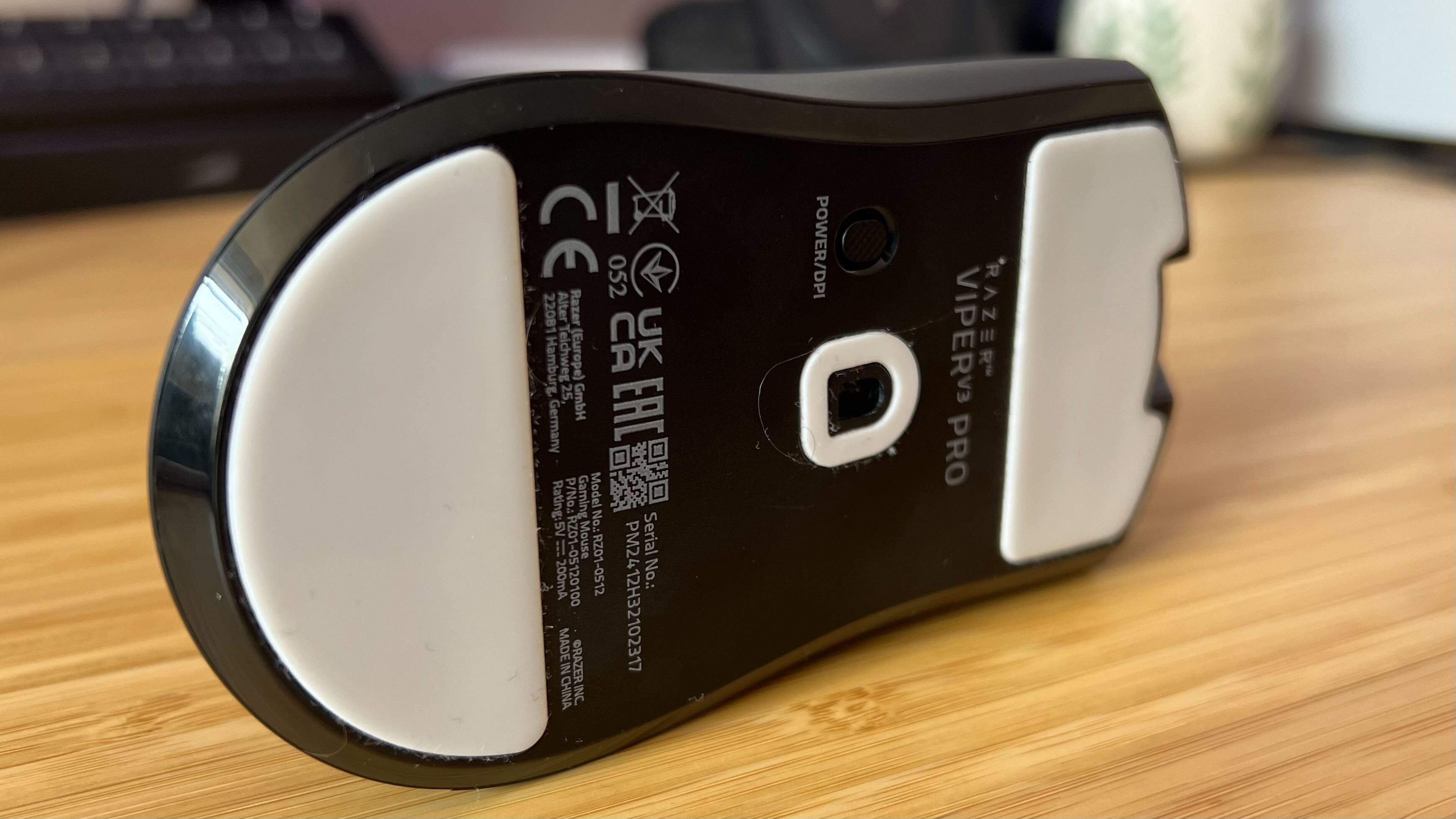
Other than the extra 5K in DPI, the new sensor’s additional features feel a little difficult to justify. A sensitivity matcher, accessible in Synapse, allows you to match the V3 Pro with another gaming mouse’s DPI simply by sliding both across a pre-determined distance at the same time. It’s a neat trick, watching the program guess the sensitivity of your previous rodent, but not one I would argue will come in all too handy for too many players. There’s also the ability to adjust your DPI in increments of one. Hey, if that’s how you want to spend your time (and trust me, I reckon this is a godsend for ultra-competitive players looking to completely refine their mouse’s feel) then go for it - but very few will need this feature in reality.
Don’t get me wrong, this is an impressive sensor. It’s super-fast, always reliable, and tracks across a massive range of different surfaces particularly easily. But there’s a ceiling to what we can actually do with the current spec parameters of gaming mice, and adding features like this makes me feel like we’ve already hit it.
Elsewhere, you’ve got the usual roster of features in Synapse; six programmable buttons (including an extra two from the scroll wheel’s movement), polling rate adjustments, and DPI shifting. Razer has also included a HyperShift layer of customization as well, offering up even more programmable inputs. It’s a shame that there’s only one profile onboard, though - another dent in the V3 Pro’s portability crown.
Performance
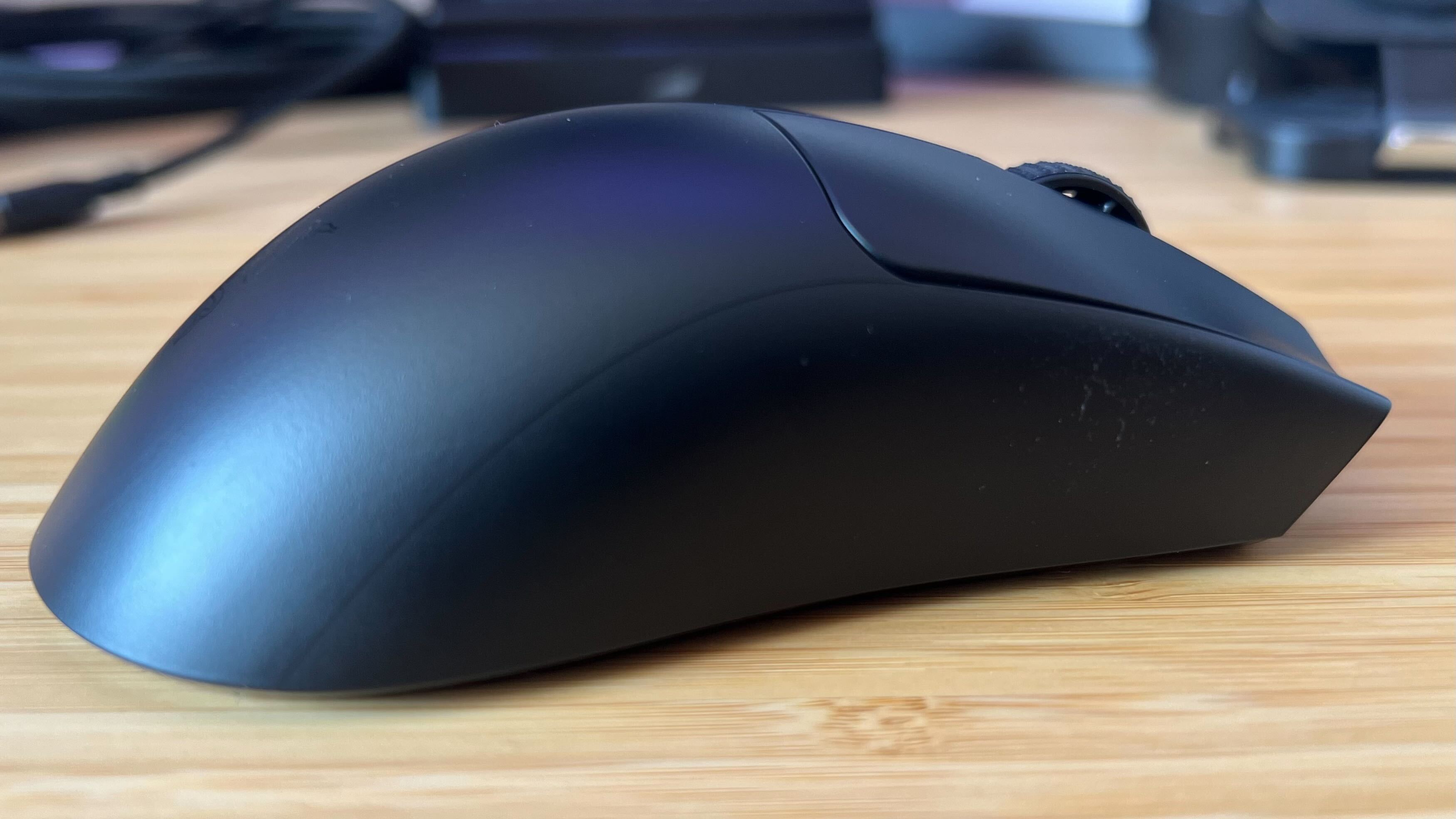
Competitive players are going to fly with the Razer Viper V3 Pro, that much is clear. This thing can run at insane sensitivities while still feeling controllable and accurate. While the sensor’s in-game characteristics aren’t too dissimilar from those before it, I was still able to sling myself around Halo arenas, one-shotting with remarkable ease. Even slower games like Fallout 4 felt snappier, I felt like ghouls were down within moments of their presence even registering in my brain and wilder swings were perfectly tracked once I had my speeds and preferences tuned up.
Razer’s Gen 3 optical mouse switches certainly help here, offering up super fast, snappy clicks with a nice level of tension behind them. You’ll find these switches in a wide range of Razer gaming mouse models, from the Basilisk V3 Pro to the Naga V2 Pro. More recently, though, they were also used in the Cobra Pro - and I have to say I prefer the tighter feel in this denser design. The V3 Pro implementation feels heavier and deeper, whereas the Cobra manages a more taut, clackier feel. The feel you prefer, though, will come down to personal choice.
That featherlight design certainly comes into its own on the battlefield. As you might expect, the Viper V3 Pro is twitch-sensitive. That means the smallest of nudge can take you as far as you need across the screen (depending on your tracking settings), with wider movements and more defined twirls feeling effortless, especially with a softer mouse pad underneath. The wider structure of the V3 Pro also kept the device feeling grounded and controlled, though, keeping everything precise and accurate but still speedy as hell.
Should you buy the Razer Viper V3 Pro?
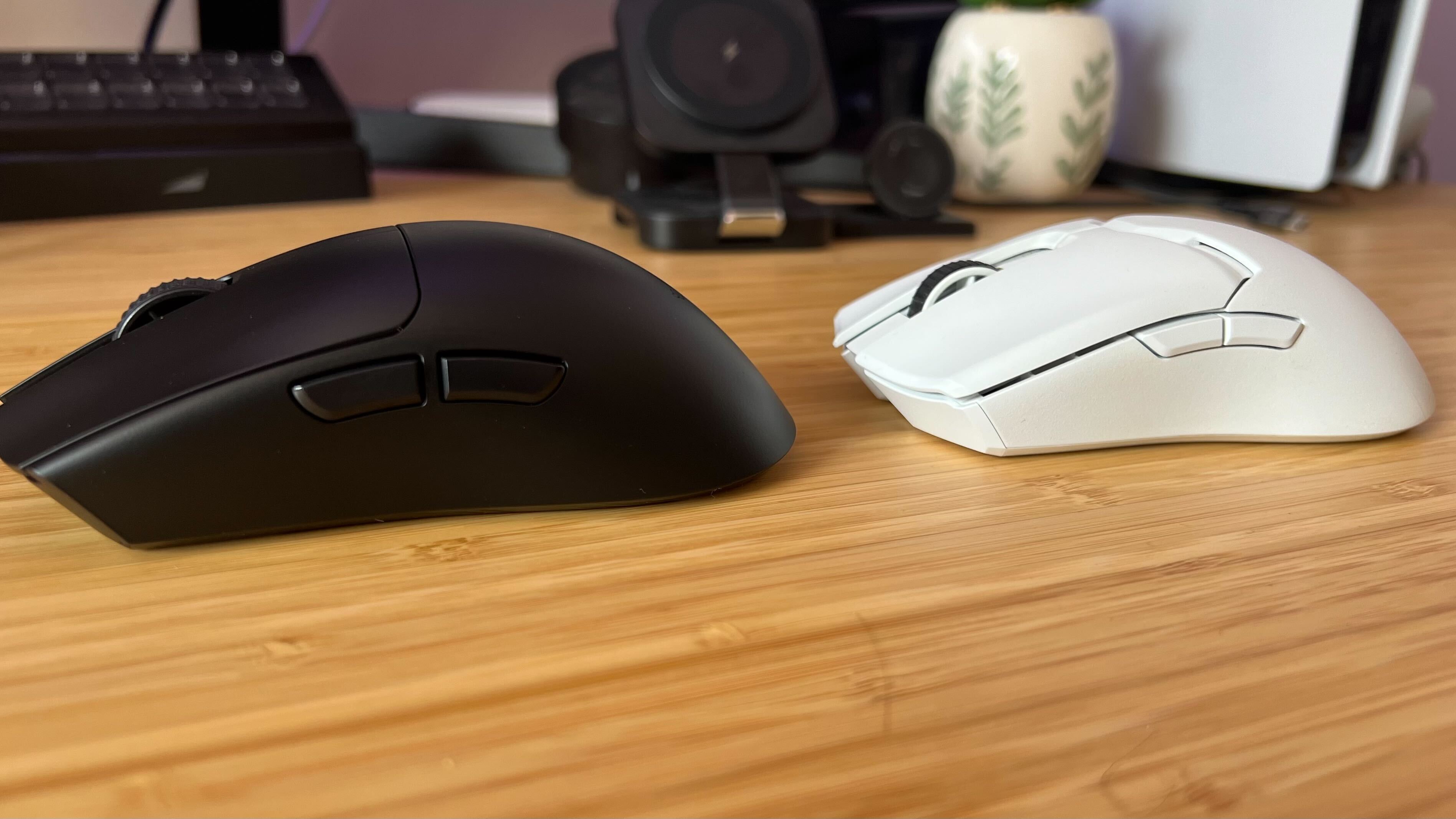
There’s no getting around it, the previous Razer Viper V2 Pro has been at the top of my roster for years now. Back in 2022, I suggested that the V2 Pro would only make sense for those after lightweight, wireless, competitive play. In general, though, that claim could have applied to a wide range of even more casual gamers. The V3 Pro doubles down on that competitive edge, potentially to the extent that I would no longer recommend it for everyday players.
You’re spending a lot of cash here - $10 / £10 more than you would have spent on the V2 Pro (and around $60 / £60 more than the older release with sales considered today). If you’re not going to be making the most of that 8K hyperpolling sensor or, like me, you prefer the tactile feel and shorter profile of the V2, then the Razer Viper V3 Pro isn’t going to make much sense.
This is an ultra-competitive device that will delight those chasing the fastest possible results at DPI settings few of us would dare reach. With a slightly obtuse wireless connection system, only one onboard profile, and restrictive DPI switching, this isn’t best placed in a more casual setting.
I would still nudge the Viper V2 Pro towards most casual players while it’s still available. It’s significantly cheaper these days, offers a very similar sensor under the hood, and only weighs in at an extra 4g. Add the slightly more exciting design, smaller (slightly more flickable) form factor, and compatibility with the 8K HyperPolling dongle should you want it, and you’ve got a wealth of options open to you. However, if you’re looking to max performance you’re not going to find much better than this.
How we tested the Razer Viper V3 Pro
I used the Razer Viper V3 Pro for all my daily work and play over a period of three weeks. In that time, I primarily tested across Halo Infinite’s arena battles, with a little Apex Legends thrown in, while also playing Fallout 4, Assassin’s Creed Odyssey, and New Super Lucky’s Tale. For more information on how we test gaming mice, check out the full GamesRadar+ Hardware Policy.
We’re also rounding up all the best Logitech gaming mouse models, for those after a different brand, as well as the best left-handed gaming mice on the market. To get that tracking just right, take a look at the best mouse pads for gaming.

Managing Editor of Hardware at GamesRadar+, I originally landed in hardware at our sister site TechRadar before moving over to GamesRadar. In between, I've written for Tom’s Guide, Wireframe, The Indie Game Website and That Video Game Blog, covering everything from the PS5 launch to the Apple Pencil. Now, i'm focused on Nintendo Switch, gaming laptops (and the keyboards, headsets and mice that come with them), PS5, and trying to find the perfect projector.
